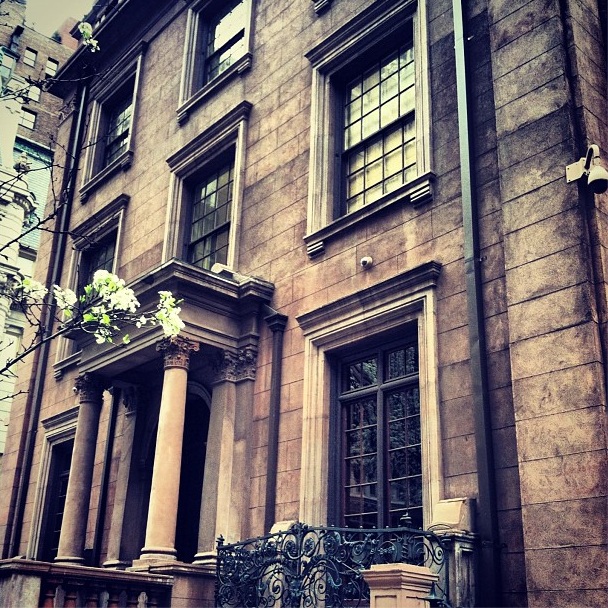
Ever wonder what it’s like to spend a day in someone else’s shoes? In this new series, we’re creating our own historic tours and taking you on a day in the life of different historical figures. First up: notorious banking tycoon John Pierpont Morgan.
This “day in the life” can be undertaken in any particular manner. However, it might be most useful to start at the home and library of Pierpont Morgan. This brownstone is one of the oldest on the island of Manhattan and was a gift from Pierpont to his son and heir J.P. Morgan Jr. or Jack for short. Once given to Jack, the two financiers shared a courtyard, as Morgan owned an almost identical brownstone at the south corner of Madison Avenue and 36th Street.
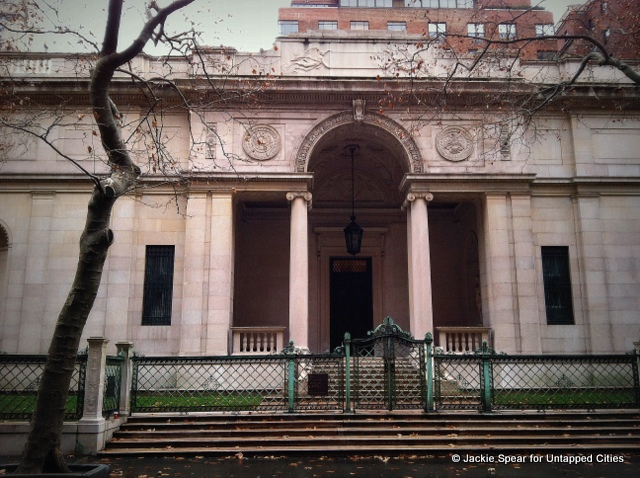 Original Collection Property on East 36th Street
Original Collection Property on East 36th Street
Adjacent to where Pierpont’s brownstone once stood, replaced by the museum annex, you can find the facade of his 1906 library, designed by Charles McKim. An avid collector of arts, rare manuscripts, and fine bindings, Morgan was quickly running out of space for his collection and had the library built to house his jewels. Inside the library you can see his personal office where he bailed the United States Government out of financial ruin in 1907.
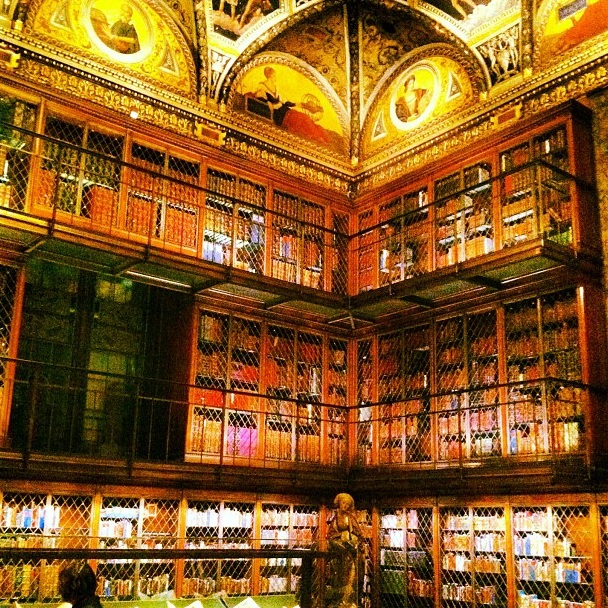 The West Room of the Library
The West Room of the Library
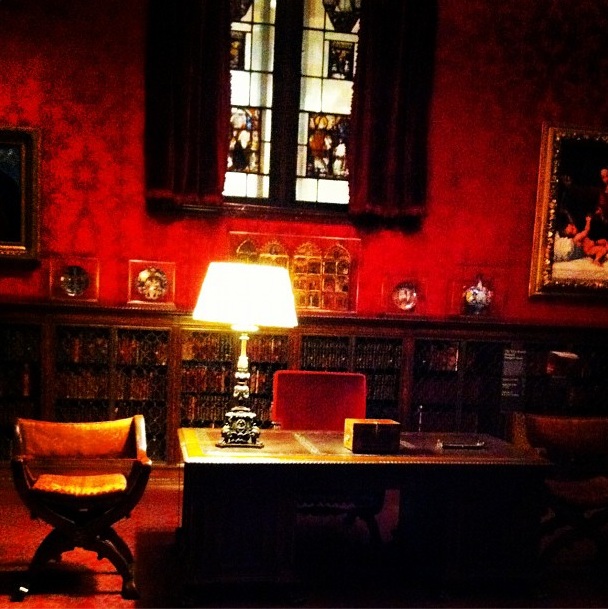 The desk of J.P. Morgan
The desk of J.P. Morgan
A deeply religious man, though he was rumored to be unfaithful to his wife Frances, Morgan would spend a good deal of his time at what was then Calvary Church (now Calvary-St. George’s) on 16th Street overlooking Stuyvesant Square. The Episcopal Church was referred to simply as “Mr. Morgan’s Church” as he sat on the equivalent of a church board of directors and was instrumental in many parish decisions up to and including choosing the rector.
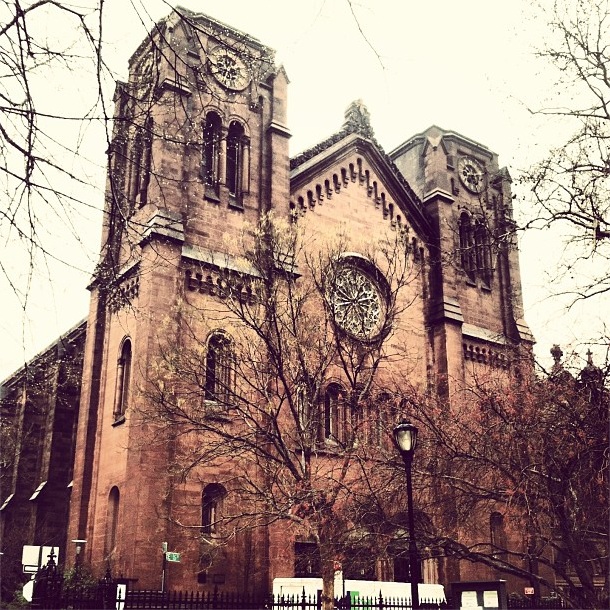 Calvalry-Saint George Episcopal Church
Calvalry-Saint George Episcopal Church
The next leg of the journey would be to head downtown to the Financial District to check out where the Morgans held business hours. This shot below is not the original building of the House of Morgan, but stands on the original ground. Location is everything as this area proves. Directly across from the Morgan Bank is Federal Hall and across to the left is the New York Stock Exchange. Pierpont Morgan certainly had his finger on the pulse of national and world economics from this corner of Broad Street and Wall Street.
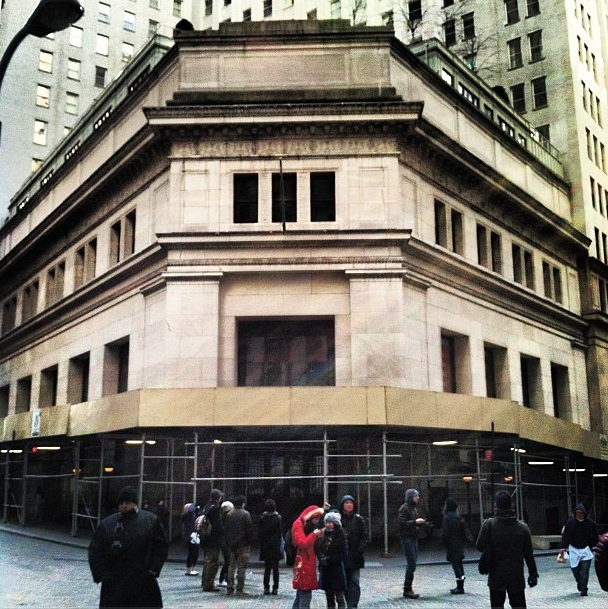 The House of Morgan. In 1920 (7 years after Morgan’s death), this building would be damaged in a bombing of Wall Street.
The House of Morgan. In 1920 (7 years after Morgan’s death), this building would be damaged in a bombing of Wall Street.
Besides collecting art and rare works of literature, Morgan had a great love for yachting and the sea. He owned four yachts, each called “Corsair” and one so fine it was even drafted into the US Navy for battle. It is no surprise that he became Commodore of the New York Yacht Club and was a key member inside this gorgeous, ornate building located at 37 W44th Street. One of the wealthier men of the NYYC, Morgan actually purchased and installed the ship stern windows on the building’s exterior.
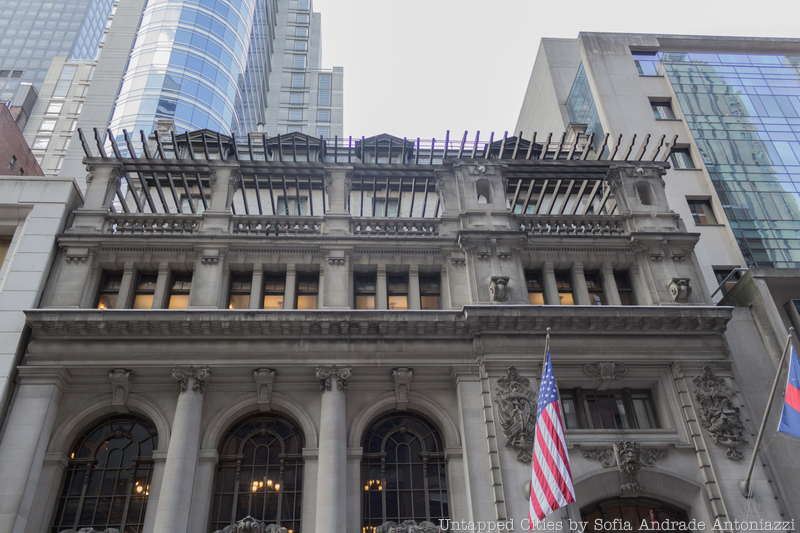
Pierpont was also driving force in establishing the Metropolitan Club, located at 1 East 60th Street. When some of his colleagues and business partners were denied entry in to the long-standing Union League Club, Pierpont hired architect Stanford White to design and build the Metropolitan Club in wonderful Beaux Arts fashion. Inside the men would enjoy the finest and rarest liquor and Morgan would no doubt be seen chewing on the end of one of his ever-present Havana cigars while sitting in fine style inside the exclusive club.
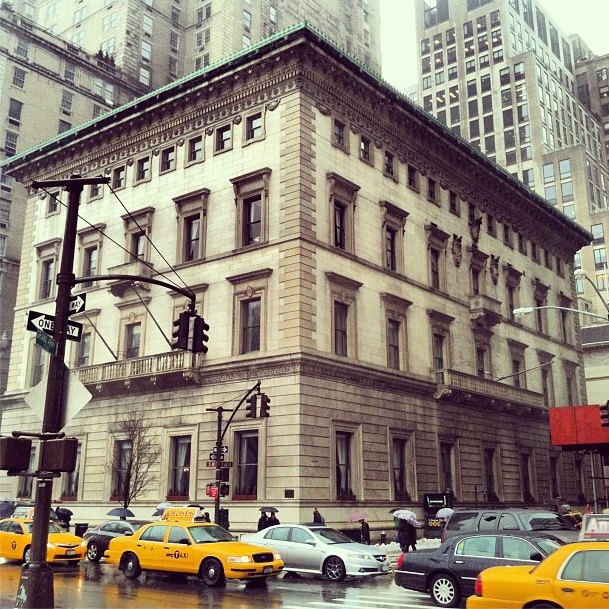 The Metropolitan Club
The Metropolitan Club
Producing a travel log following a day in the life of John Pierpont Morgan brings a traveler in contact with some of Manhattan’s hidden gems. Associating landmarks with specific historic individuals not only bring us in contact with architectural gems, it gives the monuments a story. Stay tuned for our next installment of A Day in the Life.
Unless otherwise noted, all pictures taken by and edited by Timothy Davidson. Check out Timothy’s Instagram gallery.





